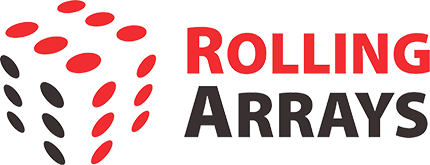
Table of Contents
Resources > Manu’s Blog > What type of HR Analytics are you looking at?
What type of HR Analytics are you looking at?
Founder & CEO – Rolling Arrays

I ended my last article on the note – How to sustain and measure the impact of an HR Transformation Project. Broadly speaking, there are two aspects to it:
- First would be ‘HR Data Foundation’ (Data Quality and Data Quantity), and
- Second would be HR Analytics for effective decision making
As trivial as these may sound, it’s a rarity for an organization to have all three – quality, quantity and mature reporting.
In this article, I will try if I can leave you with the thought that if your ‘HR Data Foundation’ is correct and is continuously maintained; it can have a massive impact in the success of your organization.
Also this article will help you with a conceptual understanding of the different types of HR Analytics currently available, and which one is the best suited for your organization.
What is ‘HR Data Foundation’?
Imagine that you have the following ‘quality data’ for your organization for the last 3 years:
- Salary Data by Country, Department, Grade and Skill
- Time Data Input (White Collar & Blue Collar) mapping to Output Revenue
- Salary Increment by Country, Department, Grade and Skill
- Attrition rate by length of Service, Country, Department, Grade and Skill
- Internal and External Training Cost per Employee per year
- Up to date Skill Matrix of Employees by Country, Department and Grade
- Up to date Organization Goals mapped to Employee Goals for all Employees
Having gone through the above HR data foundation units, by now you would have had a fair idea about:
- How far or near is your organization from an ideal ‘HR Data Foundation’ state; and
- What changes in process(s) / system(s) / culture is required to build the ideal ‘HR Data Foundation’.
Types of HR Analytics
Let’s take a look at the different types of HR Analytics available in the current market place. Before I define each of these, please note that the definitions are my own, wherein I have tried to simplify & combine various technicalities so that they are more relevant to the HR world.
i.) Operational Analytics:
Report table, report chart and report dashboard which can be easily extracted from a single HR system.
Example of Operation Analytics: Comparison of total Salary of different Countries your organization operates in.
ii.) Integrated Analytics:
Report table, report chart, and report dashboard generated from data extracted from few systems ‘neatly’ integrated with each other.
Example of Integrated Analytics: Comparison of total Salary of different Countries your organization operates in Vs total Revenue Generated per Country.
iii.) Predictive Analytics:
Ability to do a ‘what if’ analysis on data coming from different systems to predict simple scenarios.
Example of Integrated Analytics: What happens to Total Salary and Total Revenue if a certain skill in one country is transferred to a low cost country?
iv.) AI Analytics:
- Basic: In most simple terms, you are getting a Robot to use your existing Predictive Reporting Tool. i.e. you feed some predefined ‘What If’ statements that are automatically executed by your AI Reporting tool to produce a conclusive output to ‘predict’ situations on its own for your ready action.
- Intermediate: You must be reading about ‘Chat Bot’ feature which every new cloud product is attempting to offer. It converts natural language to desired ‘What If’ statements. The benefit is – ease of usage, but this technology is in the early stage of it’s’ development and should take a few years for seamless usage.
- Advance: It uses elements of Machine Learning where Machine Learning algorithms continuously enhance the pre-defined ’What If’ Statements on its own based on continuous usage. This is mimicking human intelligence.
If the above definitions of AI Analytics are freaking you out, don’t bother. Because AI Analytics will work only if your HR Data Foundation has a maturity of about 5 years and your organization is using Predictive Analytics for at-least 2 years. My search is still on to find the first company which is productively using AI Reporting. I hope to find a few companies in 2020…If you find one or know one, please don’t forget to share in comment section below:
Example of AI Analytics: Which skills should be deployed from which Country to keep the total country salary spend minimum and revenue spend maximum
Conclusion:
A robust Process to ‘Classify’ HR data and a simple and neatly integrated system to ‘Capture’ HR Data , is all that your organization needs to build a good ‘HR Data Foundation’… If done right, your organization will be able to make decisions more accurate and a lot more faster than most of your competitors….I leave it to you to reflect upon which type of HR Analytics is your organization currently using and what is the HR Analytics journey you would like to embark upon?
I do hope that this article gave you enough food for thought to bring your organization to the next level of HR Analytics….
In my next article, I will describe what I call ‘Embedded Analytics’, and some techniques to build a good HR Data Foundation Infrastructure.
About Manu Khetan
Manu, Founder and CEO of Rolling Arrays, a global HR technology leader, brings two decades of expertise to redefine HR practices. Passionate about pioneering HR automation and nurturing talent, Manu advocates for a customer-first and employee-first approach, prioritizing value creation. Beyond the boardroom, he is a dedicated family man, a skilled pianist, and an advocate for empowering the next generation of entrepreneurs. Join Manu on the transformative journey where HR emerges as a dynamic force for positive change in the business world.




Share with your network
Get updates in your inbox